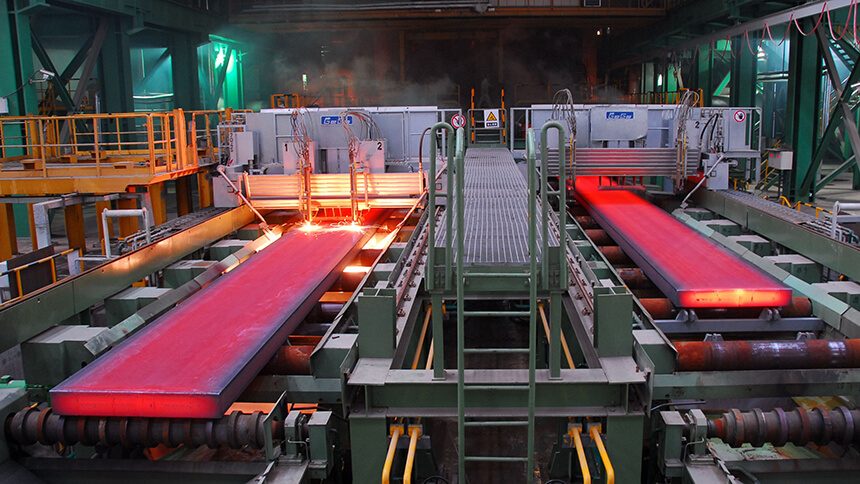What is Steel – Different Types of Steel
Steel, also known as ferrous materials, are base metals, including pig iron, ferroalloys, cast iron, cast steel, structural steel, tool steel, stainless steel, and heat-resistant steel, etc. They are all alloys composed of iron and carbon as the main elements, and are the most widely used and most used metal materials in the industry. This article will tell you the different types of steel by different classification methods.
Classification of Steel
Types of steel can be classified according to the following method:
- Chemical composition,
- Use and application,
- Manufacturing processing forms,
- Smelting methods,
- Metallographic structure, etc.
Different Types of Steel by Chemical Composition
Carbon Steel
Carbon steel refers to an iron-carbon alloy with a carbon content of less than 2% and containing a small amount of impurity elements such as silicon, phosphorus, sulfur and oxygen. According to its carbon content, these types of steel can be divided into:
- Low carbon steel, also known as iron or mild steel, has a carbon content of 0.04-0.25% (or 0.30%)
- Medium carbon steel, with a carbon content of 0.25 (or 0.30) – 0.60%.
- High carbon steel, carbon content is 0.60-1.25%.
- Ultra high carbon steel with a carbon content of 1.25-2.00%
Notes:
- Pure iron, the carbon content is ≤0.04%
- Pig iron: carbon content is ≥2.0%
For more information of carbon steel, please refer to Difference Between Low, Medium and High Carbon Steel.
Alloy Steel
Alloy steel refers to a steel that is refined on the basis of carbon steel by adding some alloying elements (such as chromium, nickel, molybdenum, tungsten, vanadium, titanium, etc.) in order to improve the properties of the steel.
According to the type of alloying elements, these types of steel can be divided into:
- Stainless steel
- chrome steel,
- manganese steel,
- chromium manganese steel,
- chrome nickel steel,
- chromium molybdenum steel and
- silicon manganese steel, etc.
According to the total content of its alloying elements, it can be divided into:
- Low alloy steel, total mass fraction of alloying elements is ≤5%;
- Medium alloy steel, total mass fraction of alloying elements is 5-10%;
- High alloy steel, total mass fraction of alloying elements is >10%.
Classification of Steel By Use and Application
According to the use, the classification of steel can be divided into:
- Structural steel
- Tool steel
- Die steel
- Spring steel
- Bearing steel
- Abrasion resistant steel (Wear-resistant steel)
- Valve steel
- Cold heading steel
- Free cutting steel
- Bridge steel
- Marine steel
- Boiler steel
- Pressure vessel steel
- Electrical steel, etc.
Classification of Steel By Manufacturing Processing
Hot Rolled Steel
Hot rolled steel refers to various steels produced by hot rolling, and most of the steel is hot rolled. This type of steel is commonly used to produce profile steel, steel pipe, steel plate and wire.
Cold Rolled Steel
Cold-rolled steel refers to various steels produced by cold rolling. Compared with hot-rolled steel, cold-rolled steel has the characteristics of smooth surface, accurate size and good mechanical properties. This type of steel is commonly used to roll thin sheets and steel strips.
Cold Drawn Steel
Cold drawn steel refers to various steels produced by cold drawing, which have the characteristics of high precision and good surface quality. This type of steel is mainly used to produce steel wire, and is also used to produce round steel and hexagonal bars with diameters below 50mm and steel pipes with diameters below 76mm.
Cast Steel
Cast steel refers to a steel casting produced by casting method, and its carbon content is generally between 0.15-0.60%. Due to poor casting properties, steel castings often require heat treatment and alloying to improve their structure and properties. In the mechanical manufacturing industry, cast steel is mainly used to manufacture parts that are complex in shape, difficult to forge or cut, and require higher strength and plasticity.
Forged Steel
Forged steel refers to various forgings produced by forging method. The quality of forged steel parts is higher than that of steel castings, and can withstand large impact, plasticity and toughness. Other aspects of mechanical properties are also higher than steel castings, so for some important machine parts should be forged steel.
Different Types of Steel By Smelting Methods
Rimmed Steel
Rimmed steel refers to steel that is incompletely deoxidized and produces rimming in the ingot during pouring. It is characterized by low cost, good surface quality and deep drawing performance, but large composition segregation, uneven quality, poor corrosion resistance and mechanical strength. This type of steel is used in large quantities for the rolling of steel and steel sheets of plain carbon steel.
Killed Steel
Killed steel refers to steel that is completely deoxidized. When pouring, the molten steel is killed and there is no boiling phenomenon. These types of steel is characterized by less segregation of components and uniform quality, but at a higher cost. Alloy steel and high quality carbon steel are generally killed steel.
Semi-killed Steel
Semi-killed steel refers to steel with a degree of deoxidation between rimmed steel and killed steel. The boiling phenomenon is weaker than that of rimmed steel during pouring. The quality and cost of steel is also between rimmed steel and killed steel. However, its production is difficult to control, so these types of steel does not account for a large proportion of steel production.

